10 Bad Bugs that Bug Us Most
Bugs surround us.
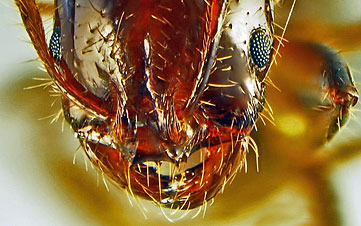

Bugs surround us. Of the 1 million or so that entomologists have identified so far, many are our friends, such as the bees that fertilize apple, cherry, avocado and many other crops, enabling them to bear fruit. Butterflies add color to our backyards, and fireflies twinkle in the summer dusk.
But a lot of bugs aren’t so nice. Many cause a great deal of damage -- whether in human and animal health or in economic losses to farmers, foresters, homeowners and others. We've identified 10 particularly bad actors that are wreaking havoc as we speak, maybe even on your neck. Quick!
Which bugs do you hate the most? Tell us about them, and why, in the comment section below.
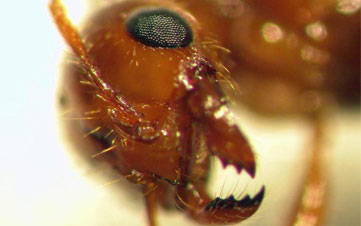
Mosquitoes
• Mosquitoes are a notorious carrier of diseases, including malaria. Eradicating malaria worldwide would cost about $5 billion each year between now and 2020.More than just a backyard pest, mosquitoes infect more than 300 million people a year with malaria and dengue fever, life-threatening diseases.
About 800,000 people a year die from malaria, and 20,000 people succumb to dengue fever, according to the World Health Organization. Africa, where mosquito control efforts are often lacking, is especially hard hit. African businesses note that work absences stemming from mosquito-borne diseases cost them $12 billion a year in lost productivity.
In the U.S., mosquitoes spread West Nile virus, which can be fatal to humans and horses.
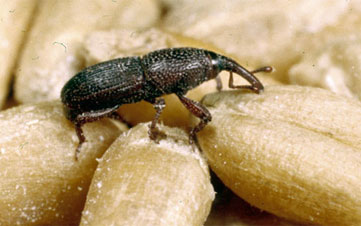
Fire Ants
•Eradication efforts by states, cities, homeowners and business owners plus expenses associated with treating bites to people and animals run around $6 billion a year.Native to South America, these swarming and stinging ants are now found as far away as China and Australia, and throughout the southern half of the U.S.
They’re quite resourceful about traveling to new locations. For example, queens and drones can fly, letting the winds take them to new homes. An entire colony can also roll up in a ball shape and float down a stream to build a new mound. And they’re ferocious when their nests are disturbed -- hundreds can sprint up on you at once, all biting at the same time, leaving bumps and pustules that sting and itch.
Young children, the elderly and frail people are especially vulnerable: Attacks can put them in the hospital or even cause death. Farm animals are frequent victims, too, hiking expenses for livestock producers.

Grain Weevils
• The bane of farmers, these pests ruin from $6 billion to $12 billion of stored U.S. grain each year.Grain weevils chew up and contaminate about 5% to 10% of the corn, soybeans, wheat, rice, sorghum, barley and other grains in U.S. granaries.
Losses are especially high in warm conditions and when agricultural commodities can’t be kept dry and safely sealed.
The weevils do even more damage in developing countries, where storage facilities are often lacking or poorly constructed. Since grains are an essential food staple worldwide, damage from weevils is a persistent threat to fighting world hunger. Fortunately, grain storage practices are improving, allowing for more grain to be tightly sealed against bugs and other pests.
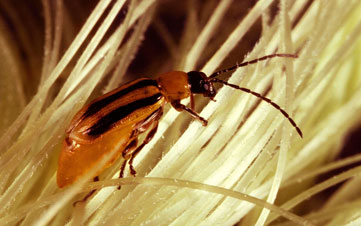
Termites
• U.S. property owners shell out about $20 billion a year to keep termites from eating them out of house and home.Economic damages from termites start with $4 billion in treatment costs to stop them once spotted plus around $16 billion to repair or replace structures they’ve visited.
The chewer-in-chief is the Formosan variety, which arrived in the 1950s from Asia and is now ubiquitous throughout the southeastern U.S. It develops massive colonies and then sends off swarms of flying termites to launch new ones. The Formosan termite attacks live trees as well as buildings.
We expect the Formosan to keep expanding across the southeastern U.S. The odds of controlling it are only fair at best. The silver lining: It doesn’t tolerate cold weather well, so it probably won’t migrate north of North Carolina or Tennessee.
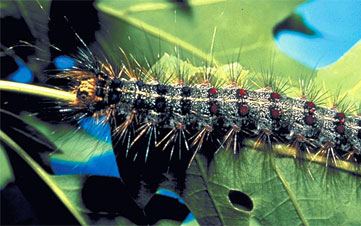
Corn Rootworms
• This bug’s larvae attack corn, America’s largest crop, chewing around $3 billion a year out of farmers’ wallets.The costs of controlling this pest with biotech seed, seed treatment and insecticides in the soil are up to about $300 million. Reduced yields cost farmers an additional $2.5 billion or more in profits, depending on corn’s value in any given harvest.
A new strain of the western corn rootworm that emerged in the U.S. in the 1990s now infests much of the Corn Belt and has spread to most of the European Union. Farmers had long controlled rootworms by rotating corn and soybeans annually, letting the insect’s eggs die out during the year that soybeans were planted. That rotation no longer restrains the new rootworm variant. So farmers are ponying up for seed to raise genetically modified Bt corn, which is engineered to produce its own insecticide to kill rootworms. But because environmental regulations prevent planting all cornfields with Bt seed, farmers have to buy soil insecticides to control rootworms on acres of non-Bt corn. Still, the rootworms munch on.

Gypsy Moths
• The U.S. Forest Service spent nearly $14 million in 2009 and 2010 keeping gypsy moths at bay in the Northeast and Mid-Atlantic alone.The moths annually strip bare around a million acres of trees in the U.S. They lay coin-size egg masses that each hatch up to 1,000 caterpillars, all hungry for the leaves of oak, birch, poplar, willow and other trees. Their voracious appetites and sheer numbers can sometimes prove fatal to many trees. The European strain has spread to 19 states in the Northeast and Mid-Atlantic plus much of eastern Canada.
Meanwhile, foresters have so far succeeded in stopping the Asian gypsy moth, which has an even broader appetite for tree leaves, from getting into American forests.
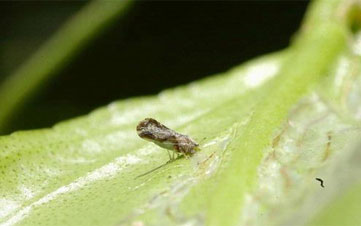
Mountain Pine Beetles
• Preventing these bark borers from spreading throughout the western U.S. costs the U.S. Forest Service about $300 million a year.Mountain pine beetles kill around 6 million acres of pines a year in the U.S. They dig into pine trees, especially when the pines are stressed from drought. The adults and larvae feed on the live wood and also deposit spores of a fungus that helps kill trees.
This native insect typically infests lodgepole, ponderosa, Scotch and other pines throughout the U.S. West, leaving entire slopes of mountains full of red, dead trees.
Similar bark beetles attack other pine, fir and spruce trees, but the mountain pine beetle takes by far the largest toll and will kill millions of acres of pines in the years ahead.
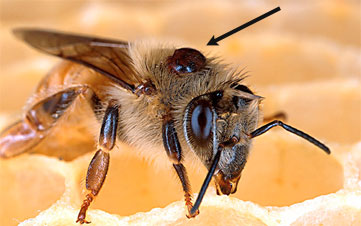
Asian Citrus Psyllids
• The tiny bug ruins a fifth of Florida’s citrus fruit -- a $200-million annual loss.
Since their arrival in Florida in 2005, psyllids have spread a lethal disease to every citrus-producing county in the Sunshine State. In the past year alone, they’ve knocked about 1 million trees out of Florida’s citrus orchards.
With their jaws, Asian citrus psyllids weaken the growing shoots of orange, grapefruit, lime, tangerine and other citrus trees. But worse, in most of the world’s citrus-growing areas, including Asia, the Middle East and Brazil, they also carry bacteria that cause citrus greening disease, which kills the trees.
Psyllids have already been spotted in California orchards, but not yet the bacteria they carry. Citrus farmers in California are holding their breath.

Varroa Mites
• They’re the evil empire of the bee world, costing U.S. beekeepers around $50 million a year in lost honey output and sales. Varroa mites are the worst parasite to ever hit beehives. Here in the U.S., they kill about 20% of honeybees annually, knocking out colonies of bees that pollinate about $30 billion worth of U.S. field and orchard crops.
The mites remain the leading cause of death to honeybees, even considering the mysterious phenomenon of recent years, called colony collapse disorder, in which entire colonies simply disappear from their hives. The mites reproduce rapidly and can wipe out entire bee colonies within months.
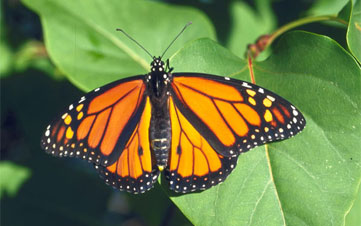
Fleas
• Americans spend $2 billion a year on products to kill fleas on their dogs -- typically $65 to $70 per dog-owning household.These guys clearly get your dog’s vote. They make dogs miserable by gnawing on them. Flea eggs, larvae and adults are found virtually everywhere, making it easy for dogs to pick them up and hard for pet owners to get rid of without vigilant treatment. Some fleas also carry tapeworm cysts, thus spreading the tapeworm parasite.

More from Kiplinger
Growing Businesses Led by Women
SLIDE SHOW: 10 States Most at Risk of Disaster
Get Kiplinger Today newsletter — free
Profit and prosper with the best of Kiplinger's advice on investing, taxes, retirement, personal finance and much more. Delivered daily. Enter your email in the box and click Sign Me Up.

-
 Stock Market Today: Dow Drops 699 Points After Powell Speech
Stock Market Today: Dow Drops 699 Points After Powell SpeechFed Chair Powell warned of a slowing economy and higher inflation but said the central bank isn't ready to cut rates just yet.
By Karee Venema
-
 Here’s How the Harvard Trump Tax Threat Could Impact You
Here’s How the Harvard Trump Tax Threat Could Impact YouTax Law Trump's latest showdown raises fundamental questions that could reach beyond nonprofit tax status.
By Kelley R. Taylor
-
 The AI Doctor Coming to Read Your Test Results
The AI Doctor Coming to Read Your Test ResultsThe Kiplinger Letter There’s big opportunity for AI tools that analyze CAT scans, MRIs and other medical images. But there are also big challenges that human clinicians and tech companies will have to overcome.
By John Miley
-
 The New Space Age Takes Off
The New Space Age Takes OffThe Kiplinger Letter From fast broadband to SOS texting, space has never been more embedded in peoples’ lives. The future is even more exciting for rockets, satellites and emerging space tech.
By John Miley
-
 Rising AI Demand Stokes Undersea Investments
Rising AI Demand Stokes Undersea InvestmentsThe Kiplinger Letter As demand soars for AI, there’s a need to transport huge amounts of data across oceans. Tech giants have big plans for new submarine cables, including the longest ever.
By John Miley
-
 What DOGE is Doing Now
What DOGE is Doing NowThe Kiplinger Letter As Musk's DOGE pursues its ambitious agenda, uncertainty and legal challenges are mounting — causing frustration for Trump.
By Matthew Housiaux
-
 A Move Away From Free Trade
A Move Away From Free TradeThe Letter President Trump says long-term gain will be worth short-term pain, but the pain could be significant this year.
By David Payne
-
 Trump’s Whirlwind Month of Crypto Moves
Trump’s Whirlwind Month of Crypto MovesThe Kiplinger Letter The Trump administration wants to strengthen U.S. leadership in the cryptocurrency industry by providing regulatory clarity.
By Rodrigo Sermeño
-
 Donald Trump Tests His Limits
Donald Trump Tests His LimitsThe Kiplinger Letter President Encounters Legal Obstacles in Pursuit of Ambitious Agenda.
By Matthew Housiaux
-
 Another Down Year for Agriculture
Another Down Year for AgricultureThe Kiplinger Letter Farmers brace for falling incomes, widening trade deficits
By Matthew Housiaux
